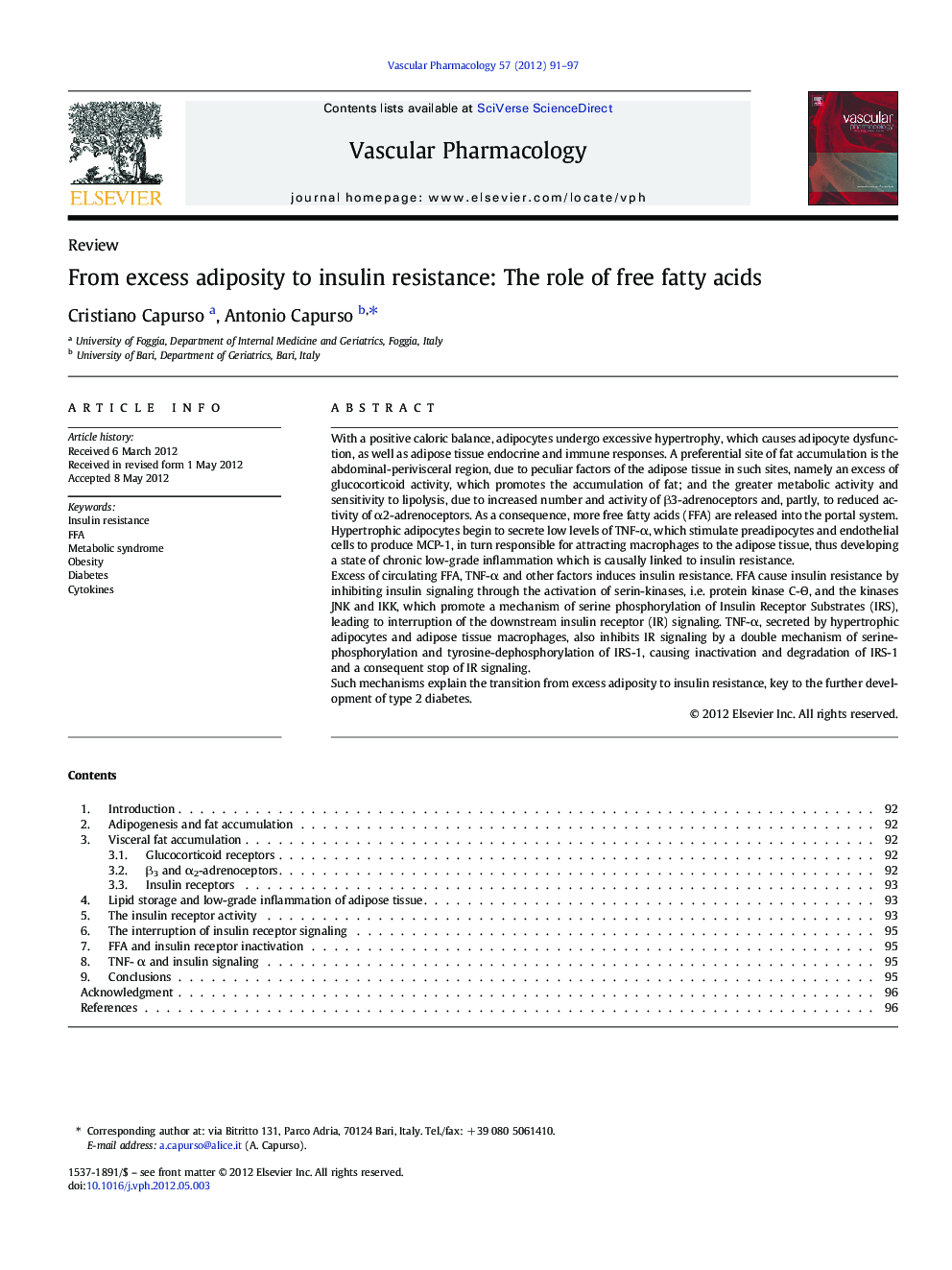| Article ID | Journal | Published Year | Pages | File Type |
|---|---|---|---|---|
| 2574297 | Vascular Pharmacology | 2012 | 7 Pages |
With a positive caloric balance, adipocytes undergo excessive hypertrophy, which causes adipocyte dysfunction, as well as adipose tissue endocrine and immune responses. A preferential site of fat accumulation is the abdominal-perivisceral region, due to peculiar factors of the adipose tissue in such sites, namely an excess of glucocorticoid activity, which promotes the accumulation of fat; and the greater metabolic activity and sensitivity to lipolysis, due to increased number and activity of β3-adrenoceptors and, partly, to reduced activity of α2-adrenoceptors. As a consequence, more free fatty acids (FFA) are released into the portal system.Hypertrophic adipocytes begin to secrete low levels of TNF-α, which stimulate preadipocytes and endothelial cells to produce MCP-1, in turn responsible for attracting macrophages to the adipose tissue, thus developing a state of chronic low-grade inflammation which is causally linked to insulin resistance.Excess of circulating FFA, TNF-α and other factors induces insulin resistance. FFA cause insulin resistance by inhibiting insulin signaling through the activation of serin-kinases, i.e. protein kinase C-Θ, and the kinases JNK and IKK, which promote a mechanism of serine phosphorylation of Insulin Receptor Substrates (IRS), leading to interruption of the downstream insulin receptor (IR) signaling. TNF-α, secreted by hypertrophic adipocytes and adipose tissue macrophages, also inhibits IR signaling by a double mechanism of serine-phosphorylation and tyrosine-dephosphorylation of IRS-1, causing inactivation and degradation of IRS-1 and a consequent stop of IR signaling.Such mechanisms explain the transition from excess adiposity to insulin resistance, key to the further development of type 2 diabetes.
Graphical abstractFigure optionsDownload full-size imageDownload high-quality image (836 K)Download as PowerPoint slide
